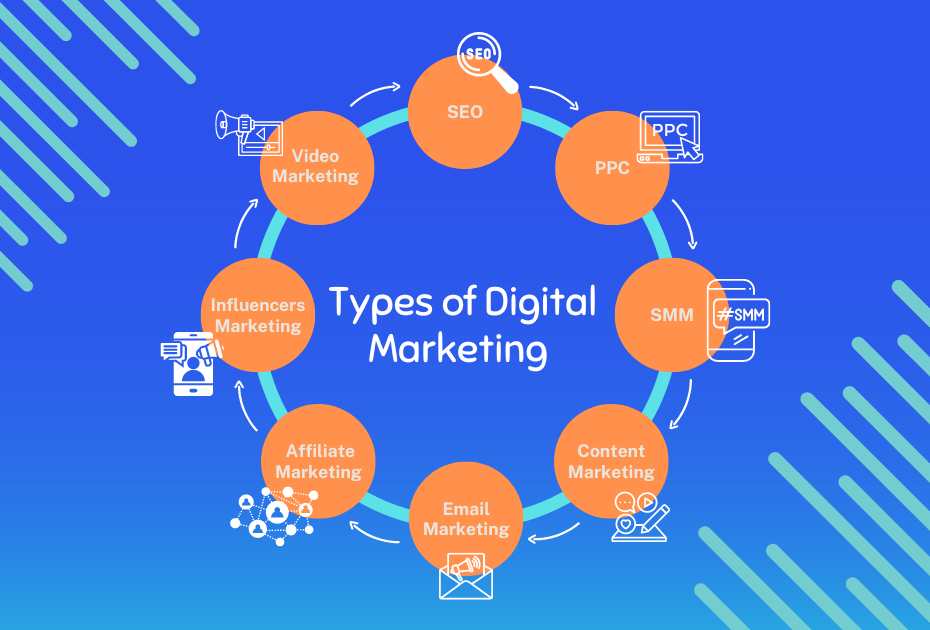
In today’s digital era, web design has evolved beyond mere aesthetics — it’s now a strategic asset essential for capturing and retaining online audiences. With competition growing fiercer every day, a well-designed website is no longer optional; it’s a critical foundation for business success. An engaging website not only attracts visitors but also keeps them interested, encourages deeper exploration, and motivates them to take meaningful actions — whether that’s making a purchase, filling out a form, or subscribing to a newsletter. The design of your website plays a pivotal role in shaping user behavior and driving these desired outcomes. In this guide, we’ll explore 10 essential principles of good website design, offering practical insights and recommendations for building websites that are visually striking, user-friendly, and aligned with business goals.
Whether you’re a business owner planning a website revamp or a marketer aiming to strengthen your digital presence, these principles will provide a roadmap for creating websites that captivate and convert in today’s competitive online world. Let’s dive in and uncover the key elements of effective web design.
What Are the Principles of Design?
The principles of good website design are the fundamental guidelines that shape the structure and style of any creative work. They serve as a roadmap for creators, helping them make strategic decisions about the arrangement, styling, and organization of different elements.
The primary goal of these principles is to create outcomes that are not only visually appealing but also effective in fulfilling their intended purpose. Whether you’re exploring the latest web design trends, learning how to build a website, seeking design tips to boost your online presence, crafting compelling graphics, or enhancing user experience during website maintenance — these principles lay the groundwork for success.
10 Principles of Good Website Design
Principle 1: User-Centered Design
Effective website design begins with a strong focus on user-centered principles. A website should always be created with the end user in mind, taking into account their needs, preferences, and behaviors. This approach involves thoroughly understanding the target audience and tailoring the design to meet their expectations.
User-centered design extends beyond visual appeal; it’s about crafting a seamless and intuitive experience that helps users easily access information and complete key tasks — whether that’s making a purchase, filling out a form, or finding resources. By prioritizing the user at every stage of the design process, businesses can foster stronger engagement, build trust, and drive higher conversions.
Principle 2: Simplicity
Simplicity plays a crucial role in delivering a seamless and positive user experience. A clean, uncluttered website design helps users focus on what truly matters, minimizing distractions and making it easier for them to engage with key content and features.
By embracing a minimalist approach — using generous whitespace, limiting unnecessary elements, and keeping navigation intuitive — a website becomes more accessible and user-friendly. Clear pathways and intuitive layouts help users navigate with ease, eliminating confusion and frustration.
In a digital world where attention spans are short and distractions are plenty, simplicity isn’t just nice to have — it’s essential.
Principle 3: Visual Hierarchy
Visual hierarchy is a core design principle that shapes how users engage with a web page. It involves the deliberate arrangement and styling of elements to direct the viewer’s attention and highlight the relative importance of each component. By establishing a clear hierarchy, users can quickly grasp the page structure and effortlessly locate the information they need.
Establishing an effective visual hierarchy relies on techniques that guide attention and emphasize content importance. Important elements should be prominently placed and highlighted using visual cues such as size, color, and positioning. Contrast helps distinguish key features, drawing attention where it matters most. Proper alignment brings clarity and structure, while grouping related items visually reinforces their connection.
Consistency also plays a vital role. Uniform use of fonts, colors, and design elements across the site creates a cohesive experience, helping users intuitively grasp how the content is organized. Finally, with mobile usage continuing to rise, it’s essential to ensure your visual hierarchy translates well to smaller screens. Mobile-responsive design should maintain clarity, usability, and logical flow — no matter the device.
When done well, visual hierarchy not only enhances aesthetics but also improves user engagement and navigation — key ingredients for a successful website.
Principle 4: Consistency
Consistency is a cornerstone of effective web design, essential for creating a seamless, cohesive, and intuitive user experience. When a website maintains a consistent design, users can easily navigate without needing to relearn layouts, styles, or patterns from page to page.
This principle applies to every visual and functional element, including color schemes, typography, iconography, button styles, and layout structure. By establishing a clear visual identity and applying it uniformly across the site, brands reinforce their personality, build trust, and provide users with a sense of familiarity.
In the bigger picture, consistency strengthens brand recognition, enhances usability, and fosters long-term loyalty. A consistent design not only makes your site look polished — it makes users feel confident and comfortable engaging with your brand.
Principle 5: Responsiveness
In a mobile-first world, responsiveness isn’t just nice to have—it’s a must. A responsive website is one that automatically adjusts its layout, content, and functionality to deliver an optimal viewing experience across all devices, whether it’s a desktop, laptop, tablet, or smartphone.
The goal of responsive design is to ensure a smooth and intuitive user experience without the need for zooming, excessive scrolling, or dealing with awkwardly scaled content. By adapting fluidly to different screen sizes, responsive websites eliminate friction, making it easier for users to engage with your content.
Beyond usability, responsiveness also supports greater accessibility by ensuring your site is inclusive of all users, regardless of their device or browsing preferences. In a digital landscape where attention is fleeting and competition is fierce, delivering a seamless experience across all platforms is key to keeping visitors engaged and coming back.
Principle 6: Effective Navigation
Good website navigation ensures that users can find what they’re looking for effortlessly. Effective navigation is more than menus and links — it’s about creating a user journey that supports your goals and ensures a smooth, intuitive experience.
It begins with knowing your site’s purpose and using design principles like visual hierarchy to guide users naturally. Thoughtful placement, consistent layout, and strategic use of calls-to-action all contribute to a navigation system that feels fluid and purposeful.
Ultimately, effective navigation isn’t just about functionality — it’s about creating a journey that feels smooth, engaging, and aligned with the user’s intent.
Principle 7: Load Time
Website load time plays a critical role in both user experience and search engine rankings. A slow-loading website can not only damage your SEO performance but also jeopardize your chance of making a strong first impression. According to Google, a delay of just three seconds increases the likelihood of users abandoning a website by 30%.
Effective technique is incorporating pre-loading animations. When done thoughtfully, these animations can entertain users while reducing frustration during wait times — creating a smoother, more engaging experience.
Remember, speed matters. A fast, responsive website isn’t just a technical necessity — it’s a key ingredient in keeping visitors engaged and encouraging them to stay longer.
Principle 8: Content Quality and choose images carefully
Content is the backbone of any successful website. High-quality content not only captures attention but also informs, engages, and guides users toward taking action. It should be relevant to your target audience, providing genuine value by addressing their questions, needs, or pain points.
Effective content is also well-structured — using clear headings, subheadings, bullet points, and concise paragraphs to improve readability and keep users engaged. Strategic keyword integration can enhance SEO performance, but it should never come at the expense of clarity or flow.
Ultimately, great content goes beyond words. It builds trust, reflects your brand’s voice, and drives meaningful interaction — whether that means prompting a purchase, encouraging a sign-up, or simply keeping visitors on your site longer.
Images are a powerful component of web design — they can evoke emotion, communicate messages instantly, and significantly enhance the visual appeal of your website. But to truly elevate user experience, the images you choose must be intentional and well-aligned with your brand and content.
Select visuals that are relevant to your message and reflect the tone and purpose of your website. For example, a travel agency site would benefit from vibrant photos of destinations, joyful travelers, and scenic landscapes that inspire exploration. Your imagery should consistently support your brand identity and help create a cohesive visual narrative.
Quality is crucial. Always opt for high-resolution, well-composed images that are optimized for web use. Poor-quality visuals — such as blurry or pixelated photos — can harm your site’s credibility and lead to a subpar user experience.
In addition to visual appeal, accessibility and performance matter. Include descriptive alt text for all images, ensuring that users with screen readers can fully access the content. Also, compress and optimize images to maintain fast loading speeds without sacrificing quality.
And finally, always ensure you have the legal rights to use the images on your site. Avoid using copyrighted materials without proper licensing, and provide appropriate credits when required.
Choosing the right images isn’t just about aesthetics — it’s about storytelling, trust-building, and delivering a seamless, inclusive experience.
Principle 9: Optimized Buttons and Calls to Action
Buttons and calls to action (CTAs) are essential elements of effective web design. They direct users toward key actions—such as signing up for a newsletter, making a purchase, or downloading a resource. When crafted thoughtfully, CTAs can greatly improve user engagement and increase conversion rates.
To maximize the effectiveness of your CTAs, concentrate on the following key elements:
1. Clear and Compelling Text
The text on your buttons should be clear, concise, and action-driven. Use concise phrases like “Sign Up Now”, “Get Started”, or “Download Free Guide” that clearly convey what the user can expect. Avoid vague wording, and make sure the action aligns with the user’s intent and journey.
2. Strategic Placement
Position your CTAs where users are most likely to engage with them — above the fold, after a product description, or at the end of a form. Placement should feel natural and intuitive, helping guide users without overwhelming the page or disrupting the experience.
3. Size and Shape
Buttons should be large enough to click or tap easily, especially on mobile devices, but not so large that they distract from other important content. Clean, rounded buttons offer a more approachable and modern feel, while consistent design throughout your site enhances visual flow.
4. Encourage Urgency
Adding a sense of urgency or exclusivity to your calls to action can greatly increase conversion rates. Phrases like “Limited Time Offer,” “Only a Few Spots Left,” or “Download Today” create a sense of immediacy, encouraging users to take action before the opportunity passes.
5. Test and Optimize
Don’t rely on assumptions — use A/B testing to experiment with variations in button text, colors, shapes, and placement. Testing helps you understand what resonates best with your audience, allowing you to refine your CTAs for maximum impact.
By focusing on these finer details, you can create optimized buttons and CTAs that not only improve usability but also drive real, measurable results for your website.
Principle 10: Mobile-First Design
Mobile-first design isn’t just a recommendation — it’s a core design philosophy. With the majority of web traffic now originating from mobile devices, adopting a mobile-first approach has become a crucial principle of effective web design.
A mobile-first approach begins with designing for mobile devices, then enhancing the experience for larger screens. Designing for small screens and slow connections emphasizes essential content, simple functionality, and a smoother user experience.
This principle directly shapes layout, navigation, and content hierarchy — ensuring that the most important information and user actions are easy to access, even on the smallest screens. The result is a site that not only performs well across all devices but delivers a seamless, streamlined experience from the ground up.
Mobile-first isn’t just about adapting — it’s about prioritising the user, wherever they are.
Conclusion
In conclusion, the principles of good website design discussed are essential considerations for creating visually appealing and user-friendly websites. When applied effectively, they can help you craft designs that are both beautiful and functional.
Remember, more isn’t always better—often, simplicity leads to the best results. As a web designer, your challenge is to find the right balance for each project to ensure its success.





